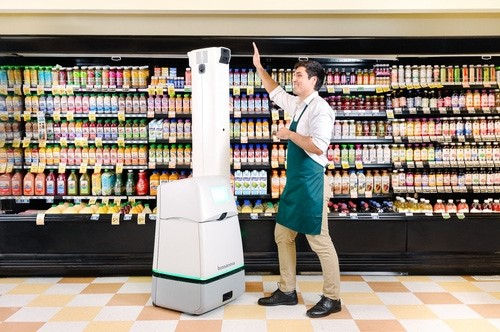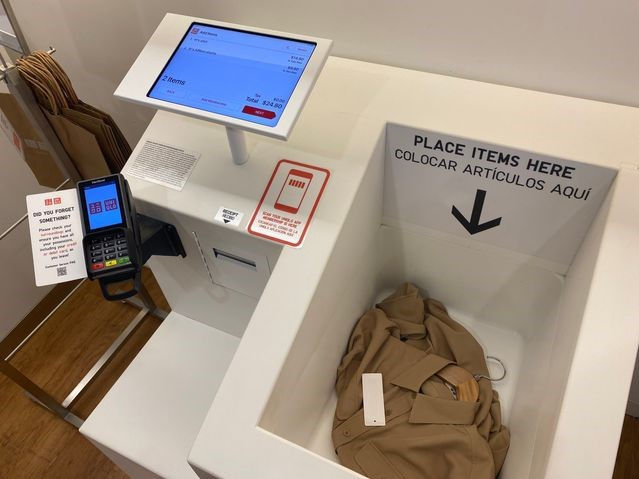Why NZ and Australian retailers need to start adopting Artificial Intelligence
- Gina Brugh

- Jun 26, 2024
- 5 min read
Updated: Aug 1, 2024

Gina Brugh, RX's Merchandise, Process and Systems Design Specialist and Co-Founder of RetailO2 (our sister business) discusses why NZ and Australian retailers need to start adopting artificial intelligence.
Retailers in New Zealand and Australia face a rapidly evolving market landscape where customer expectations, technological advancements, and competitive pressures are driving significant changes. Sprinkle that with the current economic climate and it’s a pretty tough life for retailers at the moment. Retailers should consider embracing AI-driven automation, or at least looking to see where in our retail cycle AI can assist us for the future. If you don’t highlight or investigate these areas now you will be left behind as everyone starts to adopt the benefits allowing them to move faster than you and unlocking greater business value.
Ignoring AI is no longer an option. Particularly as customers are not only willing to use GenAI tools to enhance their shopping but they are also enthusiastic about it. Recent research suggests 87% of shoppers who have tried GenAI tools are excited about the positive impacts it has on their shopping experiences. 73% are open to AI-powered chatbots for customer service and 60% have already interacted with a virtual assistant to make a purchase through voice commands.
The benefits of AI span many areas of the retail environment, specifically capabilities that optimise operations, enhance customer experiences, and drive significant growth. Here we outline a few simple ways that you can start introducing AI into your tech stack and retail cadence, but we highly recommend you think bigger for the future.
Optimising Operations
AI is instrumental in streamlining and optimising retail operations. As you all know efficient operations are mission critical for maintaining profitability and competitiveness, and AI offers several solutions in this regard:
Inventory Management: AI can significantly improve inventory management by predicting demand more accurately and optimising stock levels. Machine learning algorithms can analyse sales data, market trends, and other variables to forecast demand and manage inventory more effectively. This reduces costs associated with excess inventory and minimises the risk of stockouts.
IN MARKET
Walmart:

Utilises AI-based shelf-scanning robots to ensure stock availability and correct item placement, which helps maintain inventory accuracy and reduces out-of-stock situations.
Kmart:

Closer to home you can see an inventory tracking robot called TORY in Kmart stores on both sides of the Tasman. You can see it roam stores during quiet times - mostly overnight - triangulating exactly where apparel and homeware items are and how much stock is left.
It does this by scanning for RFID tags that are attached to the labels on products SKUs.
Lowes: It uses small cameras strategically positioned on shelves in key areas of the store, like the light bulb section. These cameras keep an eye on stock levels in real-time. When they notice a gap on the shelf, they send a quick alert to the store’s devices. This helps staff know when to restock from the stockroom promptly.
2. Pricing Strategies: AI can streamline pricing strategies. Dynamic pricing algorithms can adjust prices in real-time based on demand, competition, and other market conditions. This ensures that retailers can maximise their revenue and remain competitive without relying on manual price adjustments, which can be time-consuming and error prone.

3. Supply Chain Optimisation: AI can enhance supply chain efficiency by providing real-time insights into logistics and distribution. AI systems can predict potential disruptions, optimise delivery routes, and improve supplier management. This leads to reduced costs, faster delivery times, and improved overall efficiency.
4. Workforce Management: AI can also optimise workforce management by predicting staffing needs based on customer foot traffic and sales patterns. This ensures that retailers have the right number of staff at peak times, improving customer service and reducing labour costs.
IN MARKET
Nike: Utilises AI-powered assistance technology for virtual training sessions, creating personalised exercise plans and motivational messages to engage customers' post-purchase.

Enhancing Customer Experience
One of the most compelling reasons for adopting AI in retail is its potential to significantly enhance the customer experience. Modern consumers expect personalised, seamless, and efficient shopping experiences both online and in-store. AI can help retailers meet these expectations through various applications:
Personalised Recommendations: The modern consumer expects personalised and seamless shopping experiences, whether online or in-store. AI-driven technologies can significantly enhance the customer journey. Recommendation engines analyse customer data, including past purchases and browsing history, to suggest products that are highly relevant to each individual. This not only increases the likelihood of sales but also enhances customer satisfaction by making their shopping experience more tailored and enjoyable.
IN MARKET
Revolve: is a great example using algorithms to create and stock curated shops for each individual customer. Once they understand a customer’s taste, it makes sure their shop stays up to date. That way the customer doesn’t need to browse the entire site to find the newest most relevant items for them. It also goes a step further by integrating highlights from its social media feed with content from thousands of influencers.

2. Chatbots and Virtual Assistants: AI-powered chatbots and virtual assistants provide instant customer service 24/7. They can handle a wide range of enquiries, from product information to order tracking and issue resolution. By offering immediate support, these AI systems improve customer satisfaction and free up our human customer service team to tackle more complex issues, optimising overall service efficiency.
IN MARKET
Lowe's: Features the LoweBot, an AI-powered chatbot that assists in-store customers in finding products and answering questions in multiple languages, improving the shopping experience

3. Predictive Analytics: By leveraging AI for predictive analytics, retailers can anticipate consumer needs and trends. This enables businesses to stock the right products at the right time, reducing instances of stockouts or overstocking. For example, an AI system can predict increased demand for certain products during specific seasons or events, allowing retailers to prepare accordingly.
Driving Innovation and Growth
AI-driven innovation can be a powerful catalyst for growth in the retail sector. Retailers that harness AI can develop new business models, tap into new markets, and create unique value propositions. Here are some ways AI can drive innovation:
Enhanced Marketing Strategies: AI can analyse vast amounts of data to identify patterns and insights that inform marketing strategies. Retailers can create more targeted and effective marketing campaigns, improving return on investment (ROI). For instance, AI can help segment customers based on their behaviour and preferences, allowing for more personalised and impactful marketing efforts. Read more about this here: https://www.rxgroup.co.nz/post/ai-and-the-future-of-marketing
2. In-Store Innovations: AI can transform the in-store experience through innovations like smart shelves, automated checkouts, personalised in-store promotions and intelligent planogramming. Smart shelves equipped with sensors can track inventory levels in real-time and provide data on customer interactions, while automated checkouts enhance the shopping experience by reducing wait times. This allows us to make sure the right product is at the right place at the right time in our network.
IN MARKET
Uniqlo: RFID self-checkout

3. New Revenue Streams: AI can enable retailers to explore new revenue streams, such as offering AI-based analytics services to other businesses or developing proprietary AI technologies. Retailers that innovate in this space can position themselves as leaders in the market and attract new customers and partners.
Yes there are challenges with adopting AI, but as long as you have planned and prioritised in your cadence where, when and why you should adopt AI you will find the benefits of overcoming these challenges, or the cost of not adopting will outweigh any barriers to entry. And entry is a great starting point! Remember as retailers we cannot afford to stay still. Too often we try and solve too much at once coming into roadblock after roadblock, this simply makes us freeze as it all becomes too hard. Just start, we need to be constantly evolving to stay relevant and positioned well for success in the future. With all of the constant moving parts in retail it is too easy to get caught up in the too hard basket. Harness the power of AI and you will not look back.

Not sure where to even start? Our sister company RetailO2, led by Gina Brugh can help outline where in your cadence AI can assist. Start small and grow….but make sure you start.
Check out the RetailO2 website here: https://www.retailo2.co.nz/




コメント